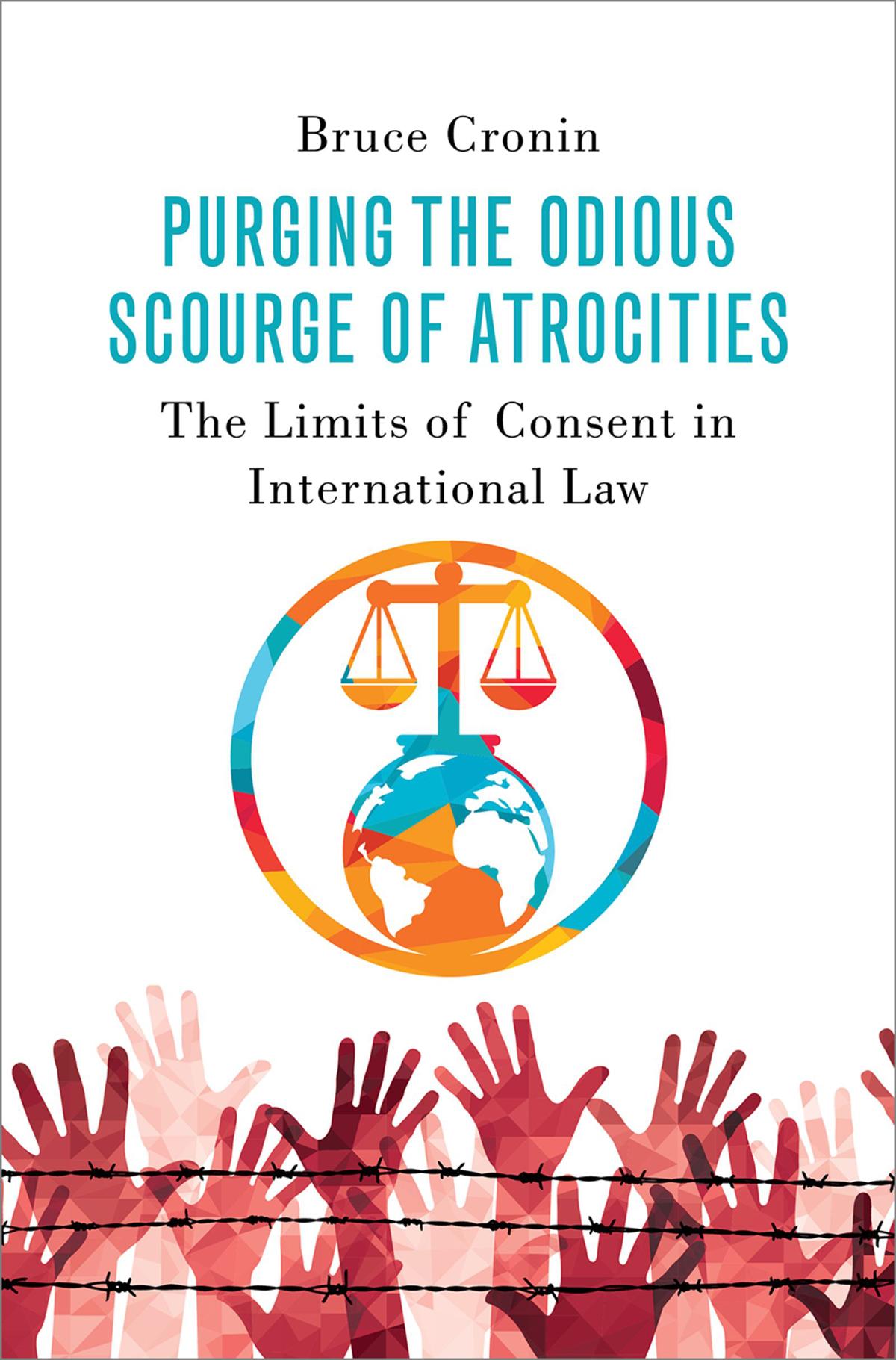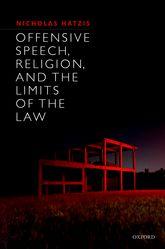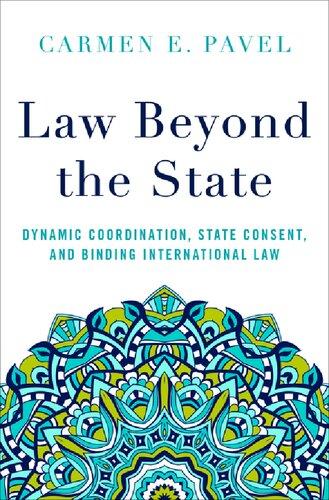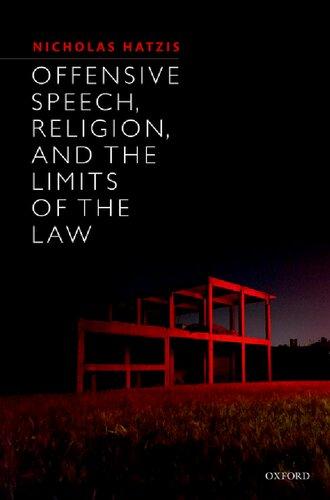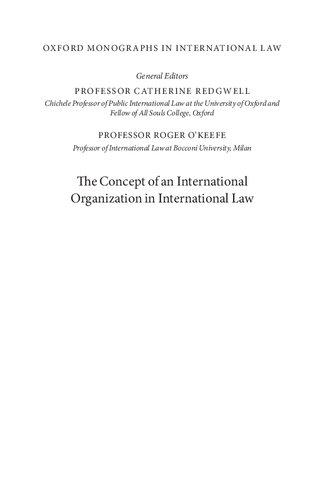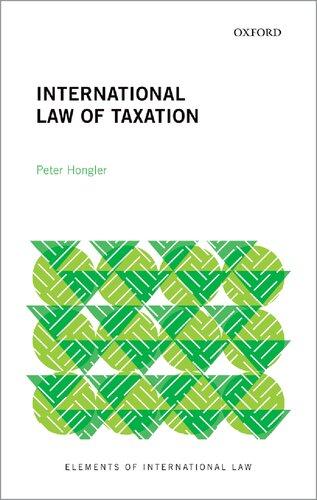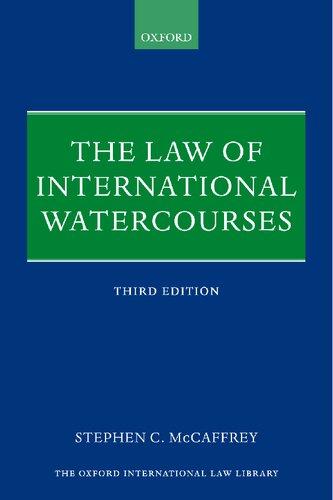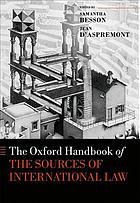Introduction: The Limits of Consent in Internat ional Law
In 2018, the UN High Commissioner for Human Rights accused the government of Myanmar of committing “grave offenses” under international law by engaging in crimes against humanity and ethnic cleansing against its Rohingya Muslim population.1 Yet the only legally binding document that specifically cites crimes against humanity as a violation of international law is the Statute of the International Criminal Court (ICC), and Myanmar was not a party to the treaty. It was also not a party to the 1977 Second Protocol to the 1949 Geneva Conventions—which provides extensive protections to civilians during internal conflicts and civil wars—and is therefore not technically bound by its provisions. Indeed, although the term “ethnic cleansing” has become a regular part of human rights discourse, it is not mentioned in any treaty, nor is it even considered a core crime in the ICC Statute. In fact, the term has never even been legally defined.
This raises a number of questions regarding the doctrine of consent in international law, particularly as it pertains to internal state violence: Can states legally commit genocide if they explicitly refuse to ratify the 1948 Genocide Convention?2 Are governments free to launch indiscriminate attacks against their own citizens during civil wars or insurrections if they are not parties to the Second Protocol to the Geneva Conventions?3 Can they legally inflict severe pain and suffering on political opponents at home or abroad if they have not signed the UN Convention against Torture?4
Moreover, can states who have signed the above treaties release themselves from their obligations by withdrawing from these agreements, as guaranteed by the Vienna Convention on the Law of Treaties?5 Does a state’s explicit refusal to ratify the abovementioned conventions constitute a clear, persistent objection that would exempt it from the prohibition even if it were considered part of customary international law? Does the lack of widespread, consistent practice in these areas negate the presumption that such bans are even part of customary law?
According to contemporary theories of international law and international relations, the answers to these questions would generally be yes. Under the principle of sovereignty, states have considerable autonomy to engage in a wide range of nefarious practices within their own borders, and with few exceptions these actions are shielded from international legal scrutiny. This autonomy can be constrained by international law and diplomatic agreement; however, the legal doctrine of state consent stipulates that governments are obligated to follow only those rules that they have agreed to accept, either explicitly by ratifying a specific treaty or implicitly by the existence of a long-term general practice that the international community recognizes as a legal norm.6
At the same time, many public officials and legal scholars have taken the position that governments are indeed legally prohibited from engaging in such actions even when perpetrated within their own borders and even in the absence of their consent to abide by them. As a number of legal scholars argue, despite a steady increase in the number of state parties to international human rights treaties in recent years, reliance upon legal agreements alone provides an unsatisfactory patchwork quilt of obligations, while continuing to leave many states largely untouched.7 Rather, in a gradual shift from 19th- and 20th-century practice, states are increasingly recognizing a limited body of international law as having general applicability that is binding on all states regardless of whether they are parties to specific agreements or whether the laws are based on a long-term general customary practice.
This suggests that states are pursuing new ways of addressing the uneasy balance between sovereignty and responsibility in world politics, and that there are limits to the doctrine of consent. However, at the moment current theories regarding the sources of international law lack a foundation for explaining how states can be required to assume legal obligations that transcend state consent.
This book will attempt to provide such a foundation by proposing a theory of sources that is based on collective international consensus rather than individual state consent, and suggesting a method for determining which legal norms fall into this category. It does so by offering a model that merges the legal with the political. In the following pages, I argue that qualitative changes in the form of global governance are leading to an expansion in the theoretical underpinnings of international law and its role in contemporary world politics. Specifically, in limited and well-defined areas of international law, states have begun to recognize the authority of collective international consensus over individual state consent as the source of some legal rules. I do not argue that these norms are replacing consent-based rules, nor do I claim that they even provide the bulk of them within the body of international law. Rather, I simply maintain that they are becoming increasingly significant in influencing the way international law is practiced in the 21st century, particularly in regulating internal state violence.
In developing a theory of consensus-based international law, I try to explain the existence and growth of a limited body of human rights law that is based, not on individual state consent or consistent state practice, but rather on collective agreement within the international community that is developed through an established multilateral process within a complex array of international institutions.8 The body of law I examine in this book involves atrocities committed by states against their own people, a practice that the Genocide Convention refers to an “odious scourge.”9
The transformation of some human rights norms into general legal obligations provides a unique opportunity to study the evolution of international consensus as a foundation for law. Unlike
much of contemporary international law, the protection of human rights is not rooted in long-term state practice (like freedom of navigation on the high seas), principles of reciprocity (such as the laws of armed conflict or diplomatic immunity), or classical notions of natural or Roman law (such as the principle of proportionality). Rather, they are erga omnes (obligations that all states owe to the international community as a whole). Their recent vintage and expansion beyond the traditional scope of international law is directly tied to changes in the structure of the global political environment to which I allude below.
Building from this premise, the project will attempt to explain how the regulation of certain acts of state violence committed within its own borders can be legally binding on governments in the absence of either explicit consent or a common customary practice. As such, these regulations are part of general international law.10 Since human rights violations exist on a continuum—from government censorship to massacring an entire race of people—the project will also establish which sets of rights are considered to be universal rather than normative or relative, and how we can determine this.11
In this vein, I argue that while the violation of many international human rights protections, such as freedom of expression and due process, are tolerated—and governed by the doctrine of consent in international law—the international community has developed a consensus around the legal control of what I call “excessive internal state violence.” I define this as a level of coercive force that the international community considers to be disproportionate and illegitimate for pursuing state interests within its own borders. This includes violent persecution (including genocide, ethnic cleansing, and apartheid); large-scale, systematic violence against domestic populations; torture; and attacks on civilians during internal armed conflicts. In these cases, state action is subject to general international law that overrides their consent.
The types of legal obligations assumed by states have important consequences for the conduct of international relations, particularly in regard to human rights. Governments treat legal obligations more
seriously than diplomatic agreements and normative commitments. The degree to which internal state violence violates international law influences how states and international and regional organizations decide to employ economic and political sanctions, engage in humanitarian intervention, issue diplomatic condemnation, and prosecute individual perpetrators in international criminal tribunals. It also determines the degree to which domestic courts will exercise universal jurisdiction, that is, the authority to investigate and prosecute certain international crimes, even if they were not committed on its territory or against one of its nationals. Like most political actors, jurists are influenced by the general beliefs held by the societies in which they operate.
In addition, international legal norms enable domestic legal systems to prosecute their own leaders in cases where the state has failed to ratify specific treaties. In fact, transnational prosecutions can catalyze domestic prosecutions by legitimizing what might otherwise be controversial actions taken against national leaders by prosecutors.12 Finally, violations of international law help nongovernmental organizations mobilize populations and create public pressure on governments and prosecutors.
The Political Foundation of International Legal Obligation
The inherent tension between national autonomy and international coexistence is the most challenging feature in a global system of sovereign states. On the one hand, the principle of sovereignty holds that states are neither subject to the authority of any higher institution nor part of any larger constitutional arrangement, except that which they explicitly accept.13 Foreign policy officials tend to be highly jealous of this autonomy and resist accepting regulations that significantly limit their freedom of action. On the other hand, while sovereignty provides a wide latitude for governments to pursue their own interests, states also participate in a complex pattern of relationships that impose limitations on their will to be independent.
Most political leaders recognize that a stable, predictable, and functional international order requires formal rules that define acceptable behavior, regulate political interaction, provide for the realization of common interests, and facilitate the resolution of disputes. In practice, even powerful states accept constraints on their autonomy as necessary for maintaining political and economic relations with other states and for pursuing common goals that they cannot achieve independently.14
For most of the 19th and 20th centuries, political leaders attempted to resolve this tension by creating international institutions that were based on the principle of voluntary state consent. In a consent-based political order, states freely choose which organizations they wish to join and which rules they wish to adopt as legal commitments. Since there is no legal hierarchy of organizations in international law or diplomatic practice, no international institution has greater authority than any other. As a result, a state’s membership—or lack thereof—in one association does not affect its status in others, and the rules of an organization cannot be extended beyond its membership. This protects state sovereignty while still providing for general rules that would facilitate cooperation and coexistence. States can therefore follow global rules without ceding their independence because they have to comply only with those rules that they have accepted.
Consent-based international law consists of an assortment of empirically verifiable customary practices and voluntarily accepted legal agreements that commit the signatories as long as they remain parties to the specific legal arrangements. Treaty commitments are made on a purely voluntary basis, and each state chooses which rules it wishes to adopt as legal obligations and which ones it does not. Although these commitments are binding so long as a state remains a signatory to the treaty, each party can ultimately opt out so long as it follows the proper procedures for treaty withdrawal. This is because consent theories hold that treaties are not like legislation and therefore do not constitute a source of universal or general law. They bind only those who specifically sign and ratify
them.15 Moreover, since states are not beholden to any higher principle, their treaty obligations do not go beyond written text or verifiable acts of state practice, a concept known as “positive law.”16 Thus, states resolve any ambiguities in the law through selfinterpretation, negotiation, or military force, although they may sometimes consent to impartial arbitration by an international court.
From this perspective, customary law reflects implied consent inasmuch as it is derived from verifiable state practice that has not only continued consistently over time but has been publicly accepted by a wide range of states within the international community as a legal obligation.17 This concept of opinio juris (an unambiguous belief by state officials that a particular practice is in fact a legal obligation) makes law based on practice a consensual act. Thus, under a legal positivist approach, political leaders and legal scholars can infer some legal obligations from state behavior by discovering exactly what states have consented to. The consensual nature of this form of the law is underlined by the fact that states can exclude themselves from customary law by voicing a persistent objection to its principles while the practice is in its early stage of development.
Thus, while states may hold each other accountable politically and diplomatically for violating broadly held norms and principles, political realists, liberal institutionalists, and legal positivists all agree that states are required to adhere only to those international legal commitments that they either specifically adopt or accept as consistent with long-term practice that is widespread, representative, consistent, and broadly acknowledged as a legal obligation. Under contemporary theories of international law, state consent legitimizes legal obligation.18 For political realists, this preserves a state’s right to reject any principle or obligation that it does not deem to be in its interest to assume, and for liberal institutionalists and positivists it strengthens the international legal system by committing states to adhere to those rules that they themselves have agreed to follow. For these reasons, consent-based legal norms have dominated international law for more than a century.
For hundreds of years international law has provided a mechanism for political leaders to define and evaluate acceptable state behavior in international relations. Like most forms of cooperation, international law is an institution designed to achieve common goals and provide for stable and predictable relationships among international political actors. Unlike other cooperative institutions, however, it is based on generalized principles of conduct that are both authoritatively binding on governments and applicable in a wide variety of circumstances. Following these rules is not simply a policy choice for political leaders, but an obligation that is fundamental for international coexistence and domestic legitimacy.19 States may sometimes violate the rules—and when they do there may be few coercive mechanisms to sanction them—however, all members are expected to observe them and there are often political and diplomatic consequences when they do not. In fact, in most cases, political leaders regard those who flagrantly violate these rules to be committing a hostile act not only against a particular state or group of states but against the international community as a whole.20 Such violators often become pariahs and lose the political, economic, and security benefits that multilateral institutions and diplomacy provide.21
All of this distinguishes international law from diplomatic practice, a distinction that is particularly important when addressing human rights regulations. Governments routinely judge and condemn each other over their policies and actions—including a state’s behavior toward its own population—but this does not necessarily involve an accusation that the target state has violated international law. The practice of “naming and shaming” is a regular part of international diplomacy, particularly regarding human rights. However, political leaders generally accept that governments may pursue a variety of nefarious policies without violating their legal obligations, even though they may levy political and economic sanctions against those who act contrary to certain values. Thus, condemnation or praise of a state’s behavior alone, even if widespread, does not necessarily indicate a belief that a particular act violates a legal norm.
Over the past century, international law has played a greater role in world politics than during any other period of the nation-state system. The dramatic increase in economic, political, and cultural interdependence among states and societies has led to a rising demand for more precise and binding commitments by governments.22 This in turn has led to a corresponding increase in the depth and complexity of the international legal system.
For example, while the scope of international law was traditionally limited to issues related primarily to bilateral relations (such as diplomatic interactions, behavior in wartime, and division of territory) and the use of common pool resources (such as the high seas), since the end of World War II it has expanded to address such previously untouched areas as the protection of refugees, human rights, international trade, the natural environment, and international criminal activity. Moreover, political leaders are increasingly framing their political actions in legal terms, and the rise in international criminal tribunals and international legal institutions have made questions of legality central to political action.23
At the same time, since international law operates within an environment that lacks a constitutional foundation, there is no single body of legal principles or institutions from which states and international organizations can develop a comprehensive set of rules and obligations. Instead, international law is derived from a highly diverse collection of multilateral treaties and customary practices that are often confirmed by judicial opinions and supported by legal principles that are common to all domestic systems.24 Moreover, unlike most domestic legal systems, the international community lacks a central power with the authority to enact legislation, interpret rules, and punish transgressors. This has several implications.
First, the international legal system has traditionally been highly decentralized. Its main functions (codification, interpretation, adjudication, and enforcement) are not primarily provided by global legal institutions but rather by individual states, who must often interpret and execute the rules themselves. It is therefore heavily dependent upon national governments and domestic courts for
implementation. Second, the range of issues over which international law has jurisdiction is still limited compared to those within domestic societies. While legal norms do cover a wide range of state practices, beyond these limits states have considerable legal autonomy to design their foreign and domestic policies as they choose. Third, governments continue to jealously guard their sovereignty and are wary of making commitments to follow general principles that would apply in unforeseen future circumstances. This makes it difficult to create new legal rules that would extend the reach of international law into new areas of politics. Often the most innovative attempts to do so are hindered by the limited number of signatories who voluntarily agree to adopt them. International law is thus difficult to develop and hard to implement.
Finally, traditionally, the lack of a “social contract” among states in the international system—as well as differences in cultural norms and practices—often hampered their ability to establish a more cohesive legal system. This has encouraged a minimalist approach to the development of international law.
For these reasons, it has been very difficult to develop general or universal rules that apply to all states under all circumstances, even if all states agree to abide by them, and therefore it is difficult to reconcile universal human rights norms with a voluntarist legal system.
Expanding Customary Law to Accommodate Universal Legal Norms
So how do we reconcile universal legal norms with an international legal system based on state consent? A growing number of international law scholars and jurists have sought to expand the concept of customary international law (CIL) to include certain types of legal norms that form over a short period of time without necessarily reflecting widespread, consistent state practice. The advantage of applying customary law in this context is that it is
binding on all states, including newly created sovereign entities, regardless of whether they participated in its formation.
Traditionally, for a legal norm to gain acceptance in customary law, two elements are required in sequence: a practice that is general, widespread, representative, consistent, and virtually uniform, followed by a general acknowledgment that such practice constitutes a legal obligation (opiniojuris).25 While opiniojurisis the key element in transforming a common practice into a legal obligation, the emphasis on state practice means that custom develops over time, whereby conduct that was initially voluntary becomes habitual and then obligatory.26 For a practice to become part of customary law, then, it must be uniform and sustained by constant repetition, which gives rise to a legitimate expectation of similar conduct in the future.27 Legal scholars and political leaders therefore traditionally determined the existence of custom by examining years of state practice before exploring the degree to which the practice is in fact an obligation.
This has made it difficult to frame human rights obligations, or any newly minted legal norm, as reflecting customary law inasmuch as most are of relatively recent vintage, have not evolved over time, have not been either consistent or uniform, and are often not reflected in widespread or general practice.
Some recent approaches to customary law, however, suggest that modern versions of customary law allow us to replace the strictly additive (two-element) model of custom formation with a singleelement theory, mostly by de-emphasizing one of the two standard requirements or by displacing them altogether.28 Thus, its proponents argue, international custom can be derived by narrowing the requirements by either focusing on opinio juris without an accompanying practice or by redefining opiniojuris itself as a form of practice. This method was first suggested decades ago by Bin Cheng, who proposed that customary law can be based exclusively on opinio juris (articulated, for example, through United Nations General Assembly resolutions) so long as it is not rejected by member states of the international community.29 Indeed, in a
comprehensive study of contemporary customary law, the International Law Commission (ILC) posits that it is now generally accepted that verbal conduct (whether written or oral) may also count as practice and that practice may even at times consist entirely of verbal acts, for example, diplomatic protests.30
Since customary law places the emphasis on the wills of individual states, proponents argue that we can examine diplomatic correspondence, advice of legal advisors, official government declarations, domestic court decisions, and government manuals for evidence of opiniojuriseven if practice is absent or sparse.31 Thus, Anthea Elizabeth Roberts argues that modern (as opposed to traditional) customary law is derived through a deductive process that begins with general statements of rules rather than first waiting for a long-standing practice to emerge.32 Such evidence of opinio juris, she argues, can be derived from multilateral treaties and declarations by international organizations leading to what legal scholars such as Christopher Joyner have called “instant custom.”33
Consistent with this formulation, the ILC recently held that “conduct in connection with resolutions adopted by an international organization or at an intergovernmental conference likewise includes acts by States related to the negotiation, adoption and implementation of resolutions, decisions and other acts adopted within international organizations or at intergovernmental conferences.”34 Moreover, the practice of international organizations when concluding treaties, serving as treaty depositaries, in deploying military forces (for example, for peacekeeping), in administering territories, or in taking positions on the scope of the privileges and immunities of the organization and its officials may contribute to the formation, or expression, of rules of CIL in those areas.
These approaches have been particularly popular among those seeking to explain how recent norms, such as the protection of human rights and the promotion of humanitarian intervention, can become general legal obligations for all states in the international community, even though they do not reflect the actual practice of states.35 In doing so, they try to reconcile the international
normative commitment to human rights with inconsistent state practice. Thus, Frederic Kirgis argues that custom exists on a sliding scale, requiring different standards for evaluation based on the legal norm: “The more destabilising or morally distasteful the activity—for example, the offensive use of force or the deprivation of fundamental human rights—the more readily international decision makers will substitute one element (opiniojuris) for the other (state practice) provided that the asserted restrictive rule seems reasonable.”36
If this is the case, it suggests that political and legal stakeholders are becoming less demanding about the consistency and duration of practice required to signify consent; this would account for their willingness to change the formula for designating a practice to be part of CIL. Thus, for example, Meron suggests that we adopt a “more relaxed approach to customary international law” compared with the “traditional approach” of a detailed discussion of the evidence.37
In this vein, several legal scholars argue that many, most, or even all of the articles in the Universal Declaration of Human Rights and the Covenant on Civil and Political Rights have become firmly embedded in customary law.38 They cite as evidence the widespread reference to these documents by a large number of states, citation by national and international courts, its incorporation into the national law of many countries, and widespread condemnation by governments when others violate its provisions. As one of the primary authors of the Universal Declaration, John Humphrey, observed, “[T]he Declaration has been invoked so many times both within and without the United Nations that lawyers are now saying that, whatever the intention of its authors may have been, the Declaration is now part of the customary law of nations and therefore binding on all states.”39
Under this formulation, the widespread violation of much of the Declaration by many states around the world would not necessarily invalidate it as a rule of customary law. As the International Court of Justice opined, “[I]nstances of State conduct inconsistent with a
given rule should generally have been treated as breaches of that rule, not as indications of the recognition of a new rule. If a State acts in a way prima facie incompatible with a recognized rule, but defends its conduct by appealing to exceptions or justifications contained within the rule itself, then whether or not the State’s conduct is in fact justifiable on that basis, the significance of that attitude is to confirm rather than to weaken the rule.”40
Clearly, then, some legal scholars, international jurists, and courts are looking for a way to expand customary law to meet contemporary needs, particularly in the area of extreme human rights violations. Since customary law has long been widely accepted as the primary source of general international law binding on all states, this seems to be a reasonable approach. Why invent a new source of law when we can reformulate an existing one to meet contemporary challenges?
Although this scholarship offers an innovative way to provide flexibility in adapting international law to changing human rights norms, it also stretches the concept of international custom well beyond its meaning. As the International Court of Justice held in the most widely cited case regarding customary law (North Continental Shelf), while the passage of a long period of time is not required for CIL, it is an “indispensible requirement” that state practice, including those whose interests are specially affected, be “both extensive and virtually uniform.”41 This is necessary to eliminate the ambiguity that is inherent in any source of law that is based on interpreting behavior. This serves to ensure that the exercise of identifying rules of CIL results in determining only such rules as actually exist.42 More important, as an empirical matter, there is little evidence that new interpretations emphasizing one constituent element over the other or even excluding one element altogether have been adopted either by states or in the case law.43
I have to agree with Robert Jennings that this “modern” concept of custom is “not only not customary law: it does not even faintly resemble customary law.”44 This is because the foundation of international custom has long been state practice, with opinio juris
being the secondary component for transforming the practice into a legal obligation. To remove action from the concept is to make the very concept a caricature of itself.45 Practice is the only way dissenting states can be obligated to follow a customary rule while remaining consistent with the doctrine of consent.46 Redefining or eliminating practice from the formula not only removes the element of implied consent; it also changes the fundamental concept of customary law that the international community has accepted for hundreds of years.
As A. Mark Weisburd observes, the only real evidence for determining practice is behavior, in particular behavior that creates expectations for future behavior.47 However, there is an inherent problem basing a source of law on interpreting state practice in a world of 195 states with a wide diversity in history, tradition, regime type, and level of development. This is particularly the case when there is a dramatic increase in the formation of new states over a short period of time, as has been the case after decolonization and the end of the Cold War.48 As the ILC noted, CIL must be “distinguished from conduct by international actors that neither generates a legal right or obligation nor carries such a legal implication. Not all international acts bear legal significance: acts of comity and courtesy, or mere usage, even if carried out as a matter of tradition, thus lie outside the scope of customary international law and the present topic.”
49
Certainly one can be sympathetic to the efforts of legal scholars to elevate the concept of opiniojuristo a higher explanatory level in determining the extent to which political leaders accept a legal norm as binding. I do so myself in this book. However, once one embarks on this line of thinking, one is no longer talking about custom, at least not as it has developed over the past several hundred years. For these reasons J. Patrick Kelly (among others) argues that customary law is rapidly becoming both outdated and a barrier to the progressive development of international law, inasmuch as it lacks the four standards of legitimacy for a legal rule developed by
Thomas Franck (determinacy, symbolic validation, coherence, and adherence).50
These problems are particularly acute when trying to determine which norms restricting internal state violence have passed into customary law. As mentioned above, the concept of human rights exists on a sliding scale, encompassing a very wide range of protections. The most egregious aspects of internal violence are loosely regulated through a series of multilateral treaties; however, a number of states have refused to sign or ratify them. According to contemporary theories of international law, even if one could establish that particular human rights treaty norms have become embedded into CIL, nonparty states would theoretically be exempt from the obligations stipulated in the agreements, since the one element that frees a state from a customary norm is a persistent objection made at the time the rule began to transition into a customary law. The persistent objector exception has traditionally been viewed by legal analysts and political leaders as necessary for customary law to remain consistent with the traditional doctrine of consent, which is still the foundation of contemporary international law.51 Clearly, an explicit refusal of a state to sign and ratify a treaty as it is being drafted is clear evidence of a persistent objection made at the time of the rule’s inception.
For these reasons, CIL has traditionally been reserved for those practices that have a long lineage, or at least those that have developed through repeated practice by a wide range of states and by many different governments. For example, it is generally recognized within political and legal circles that the basic principles underlying the laws of international armed conflict have become firmly rooted in customary law applicable to newly formed states even if they have not signed the four Geneva Conventions.52 However, the regulation of warfare (both jus ad bellum and jus in bello) has long been one of the primary goals of international law, dating back to the publication of Hugo Grotius’s De Jure Belli ac Pacisin 1625. Over the past 400 years, its basic principles have been repeatedly evoked in diplomatic correspondence, treaties,
conventions, and government military manuals and has been acknowledged throughout scores of conflicts in all parts of the world. The four Geneva Conventions of 1949 were only a modern articulation of these principles.
Similarly, much of international law governing the use of the high seas was deeply embedded in customary law long before the Law of the Seas Convention entered into force in 1994. Freedom of navigation was at the origins of modern international law and one of the oldest and most recognized principles in the legal regime governing the high seas ever since it was enshrined in Grotius’s De MareLiberumin 1609.53
So too is diplomatic law, long considered to be one of the pillars of international relations dating back to French king Louis XIV in the mid-17th century. Long before the conclusion of the 1961 Vienna Convention on Diplomatic Relations, governments conducted diplomacy according to a set of informal rules that came to be part of CIL.54
For this reason, renowned legal scholar Louis Henkin holds that given the modern origins of human rights law, and the fact that unlike customary law it has been consciously created, it could not be regarded as customary-based.55
Most important, as I demonstrate below, CIL reflects a very particular period of European history, and the structural conditions in the international system that gave rise to this form have changed dramatically. CIL emerged during a period when there was a small number of European states whose shared culture and traditions enabled them to recognize a common set of practices as constituting voluntarily accepted legal norms. Indeed, the concept of sovereign equality as a constitutive principle of the international system did not emerge in practice until after World War II, when most of the world was either under colonial rule or excluded from the European state system. Moreover, in the absence of international institutions or multilateral treaties, and with a low density of interaction among governments, common practice was the most effective standard. In fact, according to several legal scholars, most contemporary customs
are founded on the basis of practice by fewer than a dozen states.56 Thus, reconceptualizing contemporary human rights norms that are based on collective agreement without a corresponding practice as customary law takes us backward rather than forward.
If this is correct, we need to posit a new source of international law to explain some types of contemporary practice that are not based on individual state consent, particularly in the area of human rights. It is apparent from the above discussion that many legal scholars are searching for a method to explain how some legal norms can apply to all states in the absence of consistent, widespread state practice. While many still refer to this as a new form of customary law, for the reasons stated above I don’t believe that this is the best approach toward explaining what I hope to show is a new way of practicing international law. At the same time, the extensive literature among international law scholars drawing from customary law to explain emerging human rights norms reveals keen insights and innovative ideas that we can incorporate into a theory of consensus-based law.
The Evolution of International Law
Rather than rewrite the concept of customary law to reconcile universal legal norms with the doctrine of consent, I suggest that we posit a new source of international law that is rooted in the structure of the contemporary international system. I start by examining how and why different types of international legal systems evolve in the first place and how the sources of international law are derivative of the structure of the international order. Michael Scharf argues that fundamental changes in the international system can alter the legal paradigm, producing new principles of international law with exceptional speed, a process that he calls a “Grotian moment.”57 Although he advances this notion to explain what he calls “rapid custom,” the idea of a “tipping point” can be useful to explain how fundamental changes in the principles underlying international
relations can produce parallel changes in international law, without involving custom.
The evolution of international law has been historically linked to four variables that characterize the structure of the international system: (1) the nature of the constitutive units (kingdoms, empires, states); (2) the organizing principles of the system (international hierarchy, anarchy, sovereignty, globalization); (3) the density of interaction among the units (which John Ruggie defines as the volume, velocity, and diversity of interactions among political actors within international society);58 and (4) the scope and depth of institutionalization within the system (defined largely by the number and scope of authority of international organizations and the level of global governance).
During the early years of the European state system, monarchs recognized a small but influential body of natural law as providing a standard from which they could evaluate and regulate each another’s behavior. Natural law theory holds that there are certain principles of right and wrong inherent in all human societies that are necessary for the maintenance of social order. These principles are binding on both the individual members of the community and the authorities that govern them. Its precepts date back to classical Roman philosophy, particularly that of the Stoics, and the concept was further developed by Christian theologians in the 13th century.59
This form of universal law was the primary form of legal obligation accepted by rulers during the late Middle Ages and early modern period in Europe (16th–18th centuries) and remained dominant until the early 19th century.60 During this period, there was no strict line between the domestic and the international or between the public and the private sectors. There was only jus naturae et gentium (natural law binding on all humankind), and therefore the legal principles of the realm were also applicable in the king’s relations with other monarchs.
For example, sovereigns acknowledged limits on the conditions under which a monarch could initiate hostilities that drew from just war doctrine (jus ad bellum).61 The code of chivalry regulated the
combatants’ behavior in battle, and the king’s armies accepted rules governing the choice of targets and the treatment of neutrals and noncombatants.62 As the European system continued to evolve, the king’s army became the state’s army, and many of these values became embedded within the military organizations. While these limits were not always followed, they did force monarchs to provide justifications for their behavior, and when they failed to live up to them, it often led to diplomatic and military consequences within the community of recognized European royal families.
This form of international law reflected the political structure of the early modern European system: a loose cosmopolitan association of kingdoms, principalities, duchies, counties, and Free Imperial Cities, all of which were part of the universal Kingdom of God and beholden to its transnational representatives on earth, the Holy See and Holy Roman Emperor.63 The idea of a res publica Christiana (a European Christian republic that transcended the authority of the monarchs) provided the foundation for a higher authority above the individual rulers. The obligation to follow natural law was closely connected to the legitimation of the king’s divine right to rule and to his responsibilities as a European monarch. Just as the king’s authority was derived from the “natural order of things” as dictated by a supreme being, his responsibility to adhere to the restrictions imposed by natural law was the flipside of this authority.64 As such, universal natural law provided the foundation for a hierarchical system of legal obligation among sovereigns.
Religious justifications for natural law steadily diminished during the 18th-century Enlightenment, and with the rise of secularism in Western Europe modern natural law theories shifted toward the rational. By the mid-18th century, human reason had largely replaced divine inspiration as the source of natural law. This was accepted by political actors as forming the foundation for an unwritten body of universal moral principles and ethical and legal norms by which their conduct could be evaluated and governed.65
Although the Peace of Westphalia in 1648 symbolically ushered in a new political order in Europe based on a rudimentary form of state
sovereignty, the idea of a positivist Law of Nations rooted in custom —as conceived by such 17th-century jurists as Hugo Grotius and Emer de Vattel—was not actually reflected in state practice until after the conclusion of the Napoleonic wars in the early 19th century.66 This is because the territorial nation-state as the principal, if not exclusive, legitimate political form did not dominate until that time. Personal relationships and royal charters, rather than fixed territory, remained the major factor in creating and governing political communities.
During the period between the Peace of Westphalia and the 1815 Congress of Vienna, dynastic ties among European rulers had created political and social bonds that cut across territorial boundaries.67 Both governments and their populations (who were considered to be subjects rather than citizens) were built upon loyalty to the king, emperor, and Church. The recognition of natural law as a guide for the relationships among sovereigns flowed largely from the nature of their regimes and the dynastic system that dominated the continent.
The French Revolution of 1789 and its expansion through Napoleon’s continental empire destroyed this system by undermining absolute monarchy and dynastic succession as legitimate foundations for the state.68 As Napoleon’s armies moved across Europe, they formally abolished feudalism and eliminated dozens of petty principalities and duchies by consolidating their territories into large administrative units. The ultimate defeat of Napoleon left half of the continent without government, but it was not possible to simply restore the old order.69 Napoleon had abolished the Holy Roman Empire in 1806, and the power of the Catholic Church, which had been steadily losing ground to secular rulers, was dramatically reduced. This formally ended the last vestiges of political hierarchy in Europe. International anarchy, based on the absence of a central authority, was now firmly entrenched.
The 1815 Congress of Vienna (the largest meeting of European political leaders and diplomats ever assembled to date) reorganized the system of states by recognizing territory rather than dynastic
lineage as the legitimate foundation of statehood, a principle that had already been slowly evolving over the past century. The Congress was the first collective effort to base the Law of Nations on sovereign will.70 To facilitate relations among themselves, the major powers created two informal institutional structures that would formalize their relations and the rules to guide them, the Congress system and the Concert of Europe.
As a result, the transition from transnational hierarchy to international anarchy in Europe led to the parallel development of an international legal order founded not on the universality of natural law but on individual state consent. The emerging volunteerist school of law rejected universal sources of international law, such as God, reason, or transnational authority, and replaced it with one grounded in state autonomy. As Vattel had defined it a half-century earlier, sovereignty provides a “freedom that is limited only by voluntarily-accepted restraints” because the natural state of nations is an independence that does not acknowledge a social bond among them. “Nations or sovereign states must be regarded as so many free persons living together in a state of nature. States are independent not only from each other but also from any higher principle except that to which they specifically agree.”71
This new decentralized legal order rooted in consent thus grew out of an international system based on international anarchy and state sovereignty. The principle of anarchy holds that no central authority exists that can create laws, enforce agreements, or adjudicate disputes. The principle of sovereignty stipulates that even if such an authority were to exist, states would be under no obligation to obey it. Following from this, the doctrine of consent maintains that since states are not beholden to any universal principle or supranational authority, they are only obligated to follow those rules that they have specifically agreed to accept. Modern consent theories therefore reject both natural law and global hierarchy as a foundation of international obligation, and as a result, the foundation of legal obligation emanates solely from the explicit and voluntary will of each member of the international community.72
During the 19th century, customary practice was the primary source of positive international law accepted by governments. The increasing density of interaction among the European states during this period, as well as their shared culture and traditions, enabled them to recognize certain common practices as constituting voluntarily accepted legal norms. At that time, customary law was highly Eurocentric, facilitated by the cultural and social cohesiveness of the European community of states, its common history and religion, and its common legal tradition based on Roman law (ius gentium).73
This cohesiveness was maintained, at least in part, by the exclusion of other regional legal systems, such as the Qānūn and Sharia codes of the Ottoman Empire, the Chinese tributary system, and the customary practices and legal traditions in precolonial Africa. During this period, non-Western societies and less powerful Western nations played little role in the formation of international legal norms. Some non-European polities (such as the Ottoman Empire) were permitted to participate in European politics, but only on the basis of European institutions.74 Custom as practice was therefore accepted as a legitimate source of interstate law so long as European governments publicly acknowledged its legal authority.
As a result, state officials accepted a set of legal obligations based on reciprocity regarding the means and methods of warfare, the use of the high seas, and diplomatic rules that reflected long-standing state behavior and traditions passed down through royal families, sovereign rulers, and government bureaucracies.
This changed in the 20th century. The increased formalization and institutionalization of international relations encouraged states to develop more defined and better-articulated legal mechanisms for facilitating cooperation. Thus, customary practice, while still an important part of international law, largely gave way to written agreements as the primary foundation of legal obligation. This was largely an outgrowth of a modest increase in the dynamic density of interaction and the proliferation of intergovernmental institutions, such as the League of Nations, the International Labor Organization,
the United Nations, regional security associations (such as the Organization of American States), and dozens of other formal bodies.
In pursuing this approach, political leaders sought to remove the ambiguity that is inherent in CIL by codifying, clarifying, and expanding its most important principles into multilateral conventions and treaties. For example, the Hague Conventions of 1899 and 1907 and the Four Geneva Conventions of 1949 on the laws of armed conflict; the Vienna Convention on Diplomatic Relations (1961); the Law of the Seas Conventions (1994); and the Montevideo Convention on the Rights and Duties of States (1933), all codified into positive law rules that had previously been based on longstanding practice and normative principle.
International Consensus as a Source of Legal Obligation
Yet even as consent-based international law continues to dominate diplomatic and legal circles, political leaders have begun to consider legal norms that have a more universal effect on states. Much as the political and structural conditions in the 19th century provided a framework for the development of positive international law based on state consent, there is some evidence that changes in the structure of authority within the international system are producing another transformation in the nature of international legal obligation. These changes have been slowly advancing over the past 75 years. Specifically, in attempting to deal with discrete problems in international relations, political leaders have contemplated ways of creating opinio juris through collective deliberation through formal institutions among the active members of the international community rather than simply relying on state practice and public pronouncements by individual states.
This movement has been reflected in some recent scholarship questioning the degree to which consent should remain the foundation of international legal obligation. Nico Krisch and Andrew
Guzman, for example, argue that an international legal system based primarily on individual state consent is inadequate to solve many global problems, as national goals become increasingly dependent on, and vulnerable to, forces and dynamics outside their own boundaries.75 Requiring consent from all decision-making states frustrates many potential arrangements that would improve the lot of states as a whole, which in turn greatly restricts the ability of states to generate collective gains. This prevents many forms of cooperation that are necessary to achieve essential outcomes, such as the provision of vital collective goods like combating climate change, preventing the spread of terrorism, nuclear nonproliferation, stable global trade, and economic development.76 It also frustrates the ability of international law to provide a greater degree of protection for certain types of fundamental human rights that reflect broad support within the international community.
Thus, Laurence Helfer holds that there is an increasing erosion of the consent requirement, producing a change of paradigm that is manifesting itself in the weakening of the persistent-objector rule, third-party effects of treaties, and majority voting within treaty bodies and international organizations.77 He posits the rise of what he terms “nonconsensual international lawmaking,” which he defines as a legal obligation that binds a member state of a treaty or an international organization even where that country has not ratified, acceded to, or otherwise affirmatively accepted that obligation.
This approach is also represented by the efforts of the United Nations, with the strong support of its member states, to define the conditions under which individual states can exercise universal jurisdiction to prosecute specific, defined offenses committed outside of their sovereign territory. According to the principle of universal jurisdiction, certain crimes violate the fundamental principles of the international community as a whole, and as a result any national court may assert jurisdiction over their perpetrators without relying on the traditional bases of jurisdiction, territory, extradition, or nationality.78 A claim to universal jurisdiction is not made against
